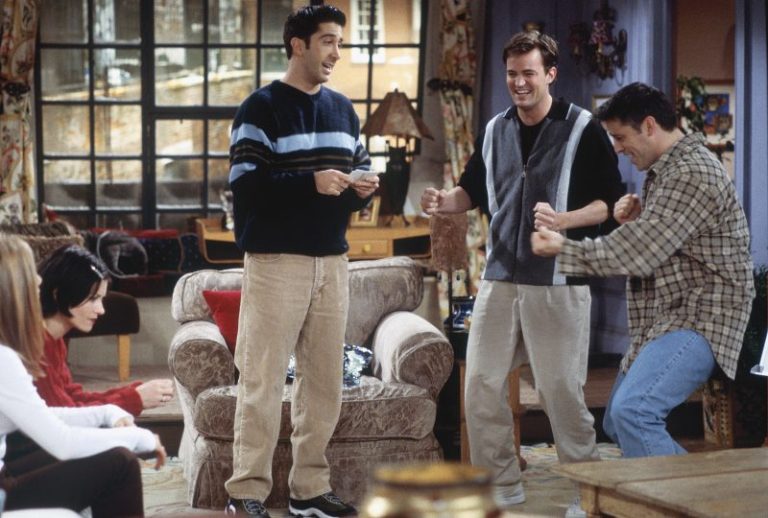Matthew Perry, the beloved actor best known for his role as sarcastic, wise-cracking Chandler Bing on the sitcom “Friends,” died Saturday at age 54.
He left behind a legion of fans and a sizable estate.
A significant portion of the actor’s wealth came from his most iconic role. That income reportedly amounts to $20 million a year, from syndication and streaming revenue.
A spokesperson for Warner Bros., which owns the show’s distribution rights, declined to verify or comment on the residual payments. CNBC was unable to reach Perry’s representatives for comment.
What may happen to Perry’s ‘Friends’ residuals
When an actor passes away, residual payments are considered the actor’s personal property. Now, this residual cash flow stream is presumably owned by his estate.
There could be three possibilities for the inheritance of Perry’s “Friends” residuals based on laws in California, where he resided, said Charlie Douglas, a certified financial planner and president of HH Legacy Investments in Atlanta.
The Screen Actors Guild-American Federation of Television and Radio Artists has contracts in which its members can list beneficiaries for residual payments upon death. As one option, Perry could have named an individual or individuals here. (It’s a similar exercise to naming a beneficiary for common types of accounts like 401(k) or individual retirement accounts.)
As a second option, Perry may have named a trust — and not an individual — as the beneficiary of his residual payments, Douglas said. The residuals would flow to the trust and the trust would, in turn, have stipulations as to who received them.
Unlike wills, which are a matter of public record in probate, trusts are private — in which case the public may never know who inherits Perry’s “Friends” income.
However, there’s a third option: that Perry didn’t name any beneficiary. In this case, state law would determine his estate plan.
“It’s quite possible that, not having a spouse or children, he didn’t [write in] anything,” Douglas said.
All states have a framework that dictates how your cash and belongings ought to be distributed when you die. These are known as intestacy laws, and they vary from state to state.
In most states, this is the typical hierarchy for inheritance, in order of who stands to receive assets: first the spouse, then children, grandchildren, parents and, finally, siblings, Douglas said.
Perry never married or had children. He is survived by his parents (who divorced when Perry was less than a year old and have both since remarried) and five half-siblings.
In California, his parents will be the likely takers of Perry’s royalties from acting roles, as well as other parts of his estate including his 2022 memoir, according to Tasha Dickinson, trusts and estates partner at Day Pitney.
If this were the case, his parents could elect to make a “qualified disclaimer” giving up their rights to the residuals, in which case the money would pass to the half-siblings, Douglas said.
“It’s not unheard of at all that wealthy parents make disclaimers,” he said. For example, Perry’s stepfather is Keith Morrison, an award-winning broadcast journalist and longtime correspondent for NBC’s “Dateline.”
Otherwise, Perry’s assets will be divided up based on the probate court system.
“Probate is especially undesirable in California because it’s expensive, time-consuming and an invasion of privacy [since] all court matters are public record,” said David Oh, head of tax and estate planning at Arta Finance.
For celebrities like Perry, especially, “not having an estate plan creates confusion, attracts unwanted media attention and can cause family disputes,” he added.
Charity may have figured into Perry’s estate
Perry may have also opted to leave his estate outside his family.
He had close relationships personally and professionally and supported several philanthropic interests, “and it wouldn’t be surprising to see some of his wealth go towards them,” Oh said.
The actor, who publicly struggled with addiction for years, once opened a sober living facility at his Malibu mansion and was working to create a foundation for addiction issues.
On Nov. 3, the Matthew Perry Foundation was established in his name as a donor-advised fund. The charity is sponsored and maintained by National Philanthropic Trust.
“When I die, I know people will talk about ‘Friends,’ ‘Friends,’ ‘Friends,‘” Perry said during an interview in 2022. “And I’m glad of that, happy I’ve done some solid work as an actor … But when I die, as far as my so-called accomplishments go, it would be nice if ‘Friends’ were listed far behind the things I did to try to help other people. I know it won’t happen, but it would be nice.”
Charitably inclined people can also use their donations to avoid or reduce estate taxes. Charitable contributions aren’t subject to estate taxes, Douglas said.
For 2023, individuals can leave up to $12.92 million to heirs without triggering a federal estate-tax bill. Beyond that, the federal estate tax rate is 40%, and although California has no estate tax or inheritance tax, that can still mean a big bill for someone like Perry, according to Oh of Arta Finance.
Sometimes, charitably minded people will donate any assets above the estate-tax threshold to charity and leave the remainder to heirs, thereby avoiding estate taxes altogether, Douglas said.
Often, such high-net worth taxpayers work with advisors on these types of strategies.
“Estate planning is not fun — not many people enjoy confronting their mortality — but the more money and assets, whether they be real or intellectual property or copyrights or royalties one has, the more important it is to have all the proverbial ducks in row,” said David Johnston, a certified financial planner and managing partner of Amwell Ridge Wealth Management.
Disclosure: NBCUniversal is the parent company of NBC’s “Dateline” and CNBC.
More from CNBC:
Why working longer is a bad retirement planCredit scores hit an all-time high even as debt soars Aretha Franklin estate battle shows importance of a will

